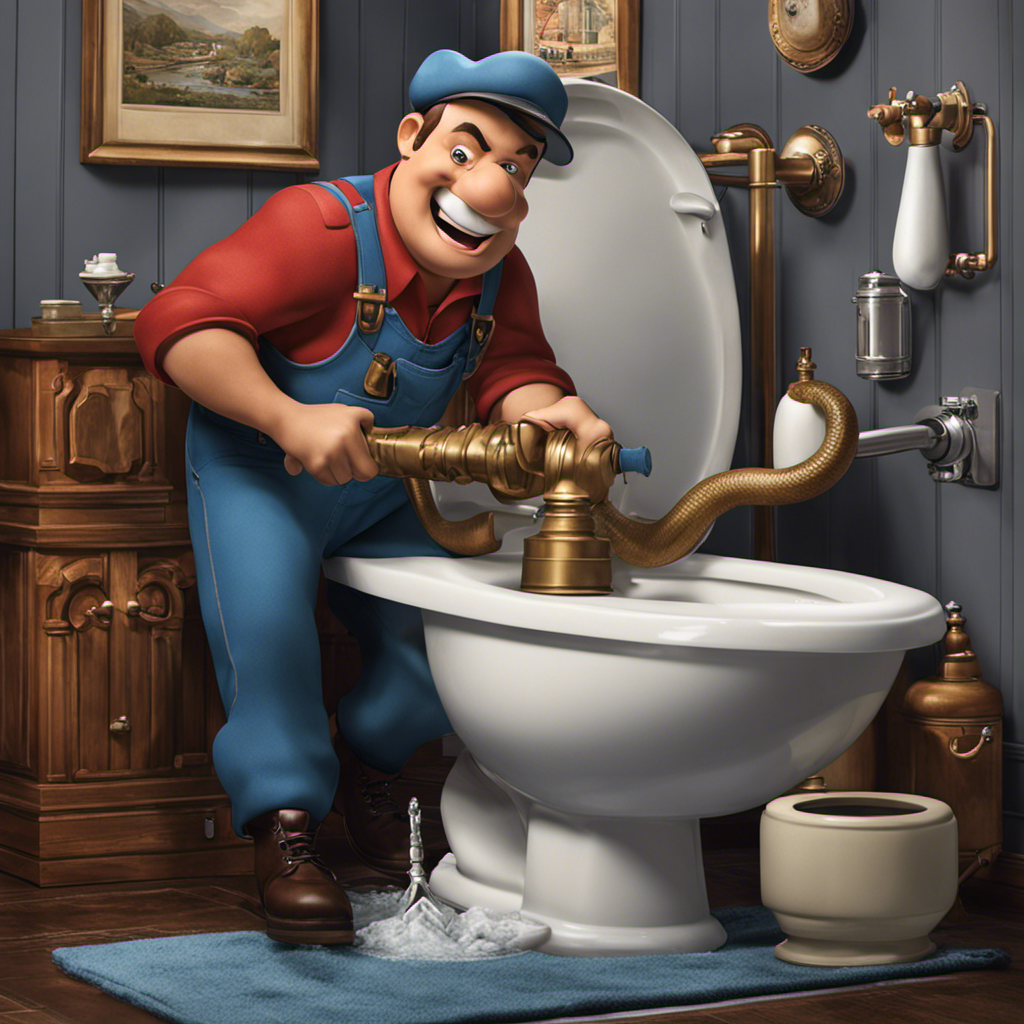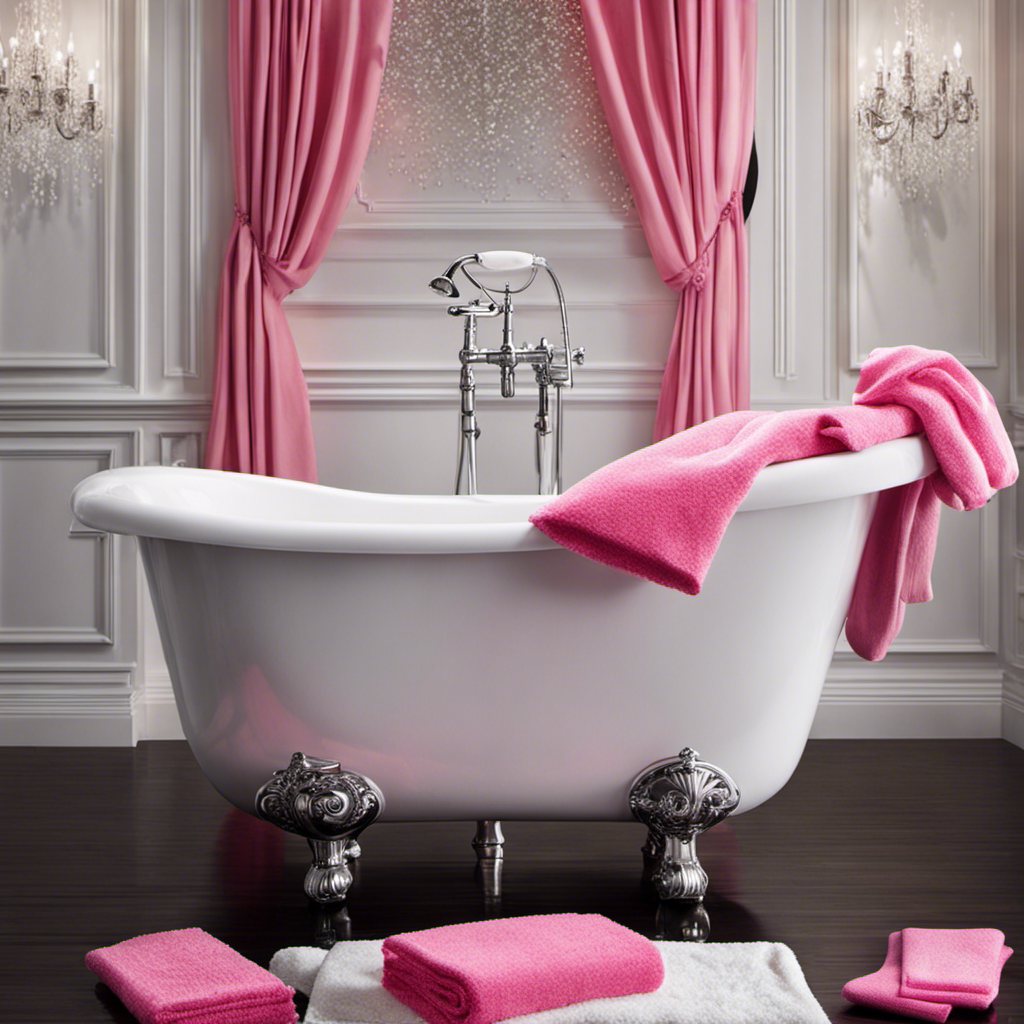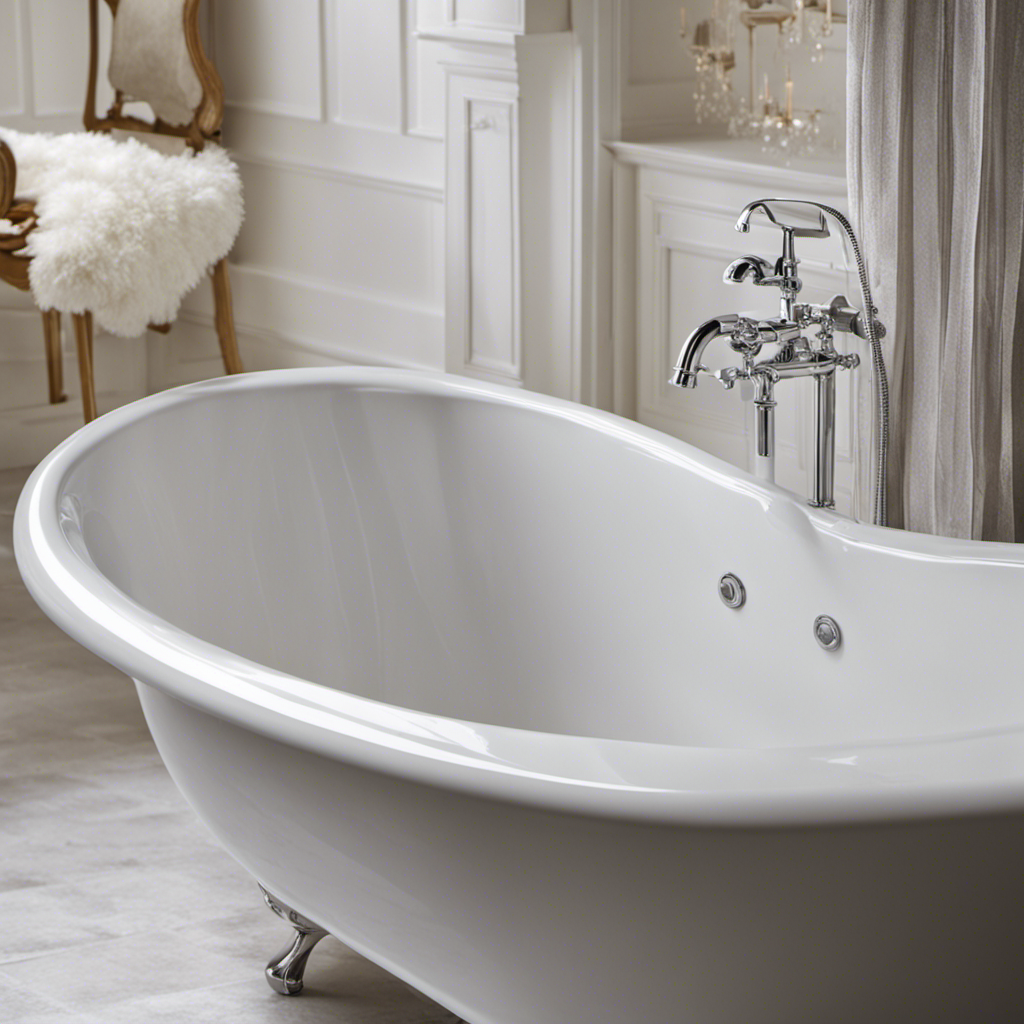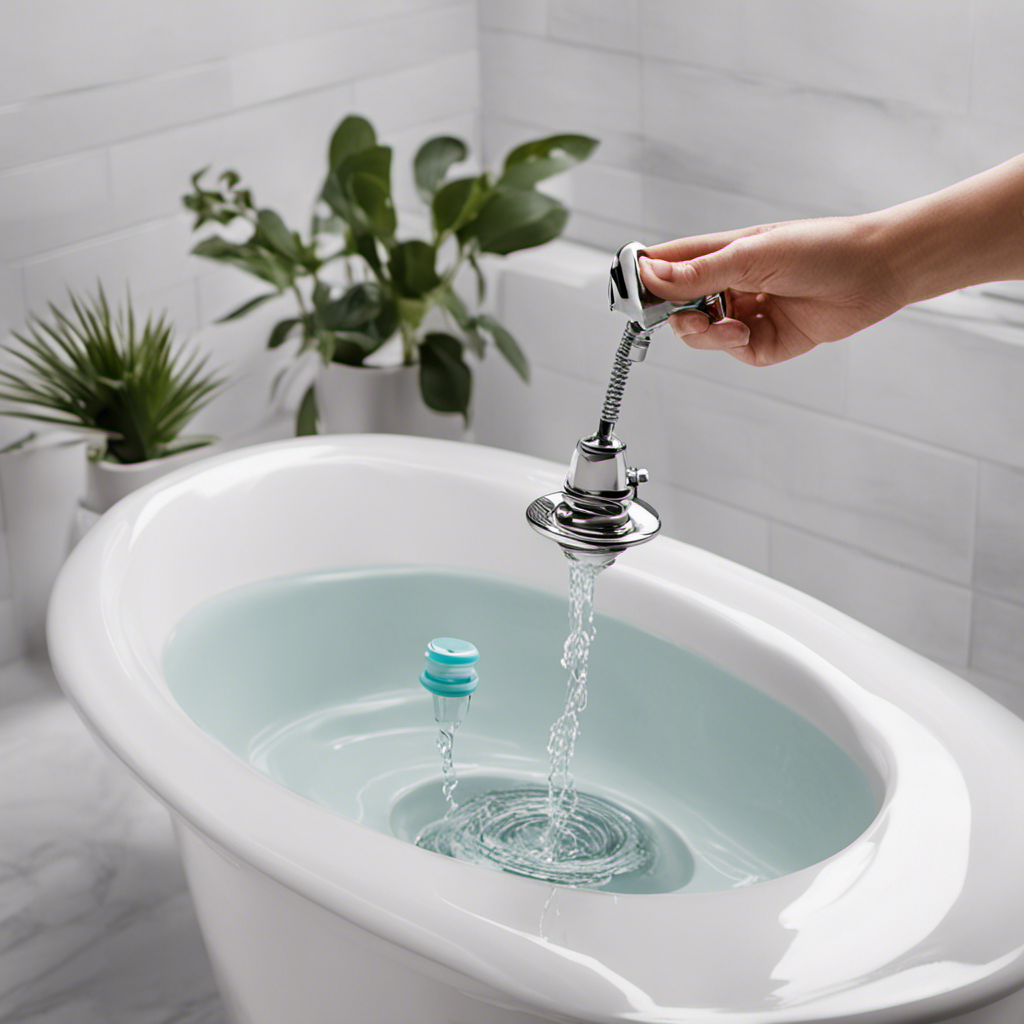Did you know that clogged toilets and bathtubs account for nearly 25% of all plumbing issues in households? If you’re facing this frustrating problem, don’t worry – we’ve got you covered.
In this article, we’ll provide you with expert advice on how to fix clogged toilets and bathtubs. From the common causes of clogs to the step-by-step instructions for unclogging, we’ll walk you through everything you need to know.
So grab your tools and let’s get started on resolving these plumbing headaches!
Key Takeaways
- Buildup of hair and debris is a common cause of clogged toilets and bathtubs.
- Using a plunger and a drain snake are effective tools for unclogging toilets.
- Baking soda and vinegar can be used as a natural remedy for unclogging toilets and bathtubs.
- Regular maintenance, use of drain covers, and avoiding flushing inappropriate items can help prevent future clogs.
Common Causes of Clogged Toilets and Bathtubs
One of the most common causes of clogged toilets and bathtubs is a buildup of hair and other debris. When you flush toilet paper, hair, or any other material down the toilet, it can accumulate and block the plumbing pipes.
Similarly, when you wash your hair or use soap in the bathtub, the residue can accumulate in the drain and cause a clog.
To prevent toilet clogs, make sure to only flush toilet paper and avoid flushing anything else.
For bathtub drain maintenance, regularly remove any hair or debris that accumulates near the drain to prevent it from going down and causing a blockage. You can use a drain cover or a hair catcher to trap the hair and prevent it from going down the drain.
Tools and Materials Needed for Unclogging
To unclog, you’ll need a plunger, a drain snake, and some baking soda and vinegar.
Unclogging a toilet or bathtub can be done using various techniques, depending on the severity of the clog.
Before attempting any unclogging techniques, it’s important to gather the necessary tools and materials.
A plunger is an essential tool for unclogging toilets and bathtubs. It creates suction and pressure to dislodge the clog.
A drain snake, also known as a plumber’s snake, is useful for removing stubborn clogs deeper in the pipes.
Baking soda and vinegar can be used as a natural and chemical-free alternative. These ingredients, when combined, create a foaming reaction that helps break down the clog.
If you’re unsure or uncomfortable with unclogging, it’s always best to seek professional help.
Now, let’s move on to a step-by-step guide to unclogging a toilet.
Step-by-Step Guide to Unclogging a Toilet
Start by gathering the necessary tools and materials, such as a plunger, toilet auger, baking soda, and vinegar, to unclog the toilet.
To effectively unclog a toilet, follow these steps:
-
First, use the toilet plunger to create a seal around the drain hole. Push down firmly and then pull up quickly to create suction that will dislodge the clog.
-
If the plunger doesn’t work, try using a toilet auger. Insert the auger into the drain hole and turn the handle clockwise. This will help break up the clog and allow it to be flushed away.
-
Alternatively, you can try a natural remedy by pouring a cup of baking soda into the toilet bowl, followed by two cups of vinegar. Let it sit for a few minutes and then flush the toilet.
-
If these methods don’t work, it may be necessary to call a professional plumber to assess and fix the issue.
Remember to always take precautions when dealing with plumbing issues, and if unsure, seek professional assistance.
Step-by-Step Guide to Unclogging a Bathtub
If you’re dealing with a clog in your bathtub, the first thing you should do is remove the drain cover. This will allow you to access the clog and start working on unclogging your bathtub.
There are several effective home remedies you can try to unclog your bathtub before resorting to calling a professional plumber. One option is to use a mixture of baking soda and vinegar. Simply pour half a cup of baking soda down the drain, followed by half a cup of vinegar. Let it sit for about 30 minutes, then flush with hot water.
Another option is to use a plunger to create suction and dislodge the clog. Make sure to use a plunger specifically designed for use on drains.
If these home remedies don’t work, you may need to use a chemical drain cleaner. However, it’s important to choose the right one, as some cleaners can damage your pipes. Look for cleaners that are specifically formulated for bathtub drains and are safe to use on different types of pipes.
Regular maintenance is also important to prevent future clogs. Using the best bathtub cleaners for maintaining a clog-free drain can help keep your bathtub running smoothly.
Preventing Future Clogs in Toilets and Bathtubs
Regular maintenance and being mindful of what goes down the drain can help prevent future clogs in toilets and bathtubs. Here are some tips to keep your plumbing in top shape:
- Use a drain cover or strainer to catch hair, soap scum, and other debris.
- Avoid flushing anything other than toilet paper down the toilet.
- Clean the bathtub drain regularly by removing the cover and using a plumbing snake or wire hanger to remove any buildup.
- Consider using a biodegradable drain cleaner to prevent clogs and keep your pipes clear.
Understanding the warning signs of potential clogs is also important. Look out for slow draining water, gurgling sounds, or foul odors coming from the drains. If you notice any of these signs, take action immediately to prevent a full-blown clog.
Frequently Asked Questions
How Can I Determine if the Clog Is in the Toilet or the Bathtub?
To determine the location of the clog, look for signs of a clogged toilet or bathtub. Check if flushing the toilet causes water to backup into the tub. If so, the clog is likely in the main drain.
Are There Any Natural Remedies or Homemade Solutions That Can Be Used to Unclog a Toilet or Bathtub?
There are natural remedies and homemade solutions to unclog a toilet or bathtub, such as using a mixture of baking soda and vinegar. These can be effective in clearing minor clogs before seeking professional help.
Can Using Chemical Drain Cleaners Damage the Pipes?
Using chemical drain cleaners can potentially damage your pipes. These harsh chemicals can corrode the interior of the pipes, leading to leaks or even complete failure. It’s best to avoid them and opt for safer, alternative methods.
Is It Necessary to Remove the Toilet or Bathtub to Unclog Them?
To unclog your toilet or bathtub without removing them, there are alternative methods you can try. You can use a plunger, a drain snake, or a mixture of baking soda and vinegar. Additionally, to prevent future clogs, avoid flushing non-flushable items and regularly clean your drains.
What Should I Do if the Clog Persists Even After Following the Unclogging Steps?
If the clog persists even after following the unclogging steps, there are alternative methods for unclogging a toilet or bathtub. You can try using a plumbing snake or a chemical drain cleaner. To prevent future clogs, avoid flushing non-flushable items and regularly clean the drain.
Conclusion
In conclusion, you now have the knowledge and tools to effectively fix clogged toilets and bathtubs. By following the step-by-step guides provided, you can easily unclog these plumbing fixtures and restore them to full functionality.
Remember to be mindful of the common causes of clogs and take preventative measures to avoid future issues. With a little effort and the right techniques, you can become a DIY plumbing expert in no time.
So don’t let those clogs get you down, tackle them head on and enjoy a smoothly running bathroom. Happy plumbing!










